The beauty of custom font in Android cannot be underestimated. With the ability to choose your own fonts, you can have a unique and personalized experience when using your Android devices.
We can use custom fonts to enhance the look and feel of your device and improve readability and accessibility. As Android developers, We have come to appreciate the power of custom font in creating unique and immersive user experiences in mobile applications.
One of the greatest advantages of using custom fonts in Android is the flexibility it provides in terms of design. By using XML attributes and style sheets, developers can easily adjust the font size, weight, and style to fit their specific design needs without relying on pre-set options.

The Basics Of Custom Fonts On Android

Understanding the basics of the custom font on Android is essential for developers who want to enhance user experience and create unique designs. Custom fonts provide an opportunity to differentiate your app from others and make it more visually appealing. The process of adding custom fonts to your Android app is relatively simple. First, you need to download the font file and add it to your project’s assets folder.
Then, you can create a Typeface object by using the Typeface class and setting it to your TextView or any other UI element that supports custom fonts. We must choose the right font format for your app because not all font formats are supported on Android. It is crucial to note this. The most commonly used formats are TrueType and OpenType, which are compatible with almost all devices.
How Can We Develop Custom Fonts In Android?
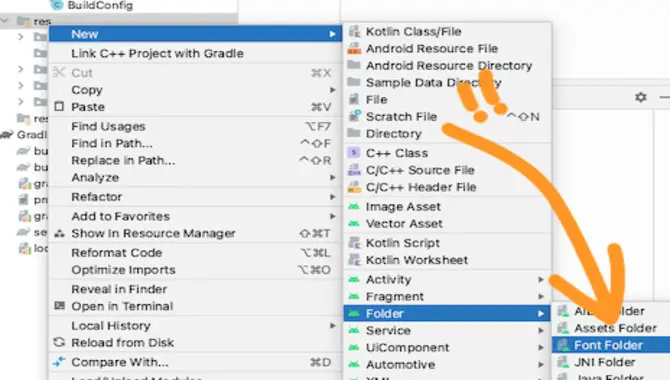
Custom fonts can add a unique touch to an Android app’s design and branding. We can develop a custom font in Android in a few simple steps. The first step is to create a font file in a format that Once we create the font file, you can add it to the app’s assets folder, and Android supports fonts such as TrueType or OpenType.
Next, you must modify the app’s code to access the custom font. The app can use the Typeface class to load the font file and apply it to specific text views to achieve this. Developers can use the Typeface class with the TextView class to apply custom fonts to specific text elements within the app.
To apply the custom font to all text elements within the app, you can modify the app’s theme to include the custom font as the default font. We can create a custom theme that inherits from the app’s base theme and set the font attribute to the custom font to do this.
Installing Custom Font On Android
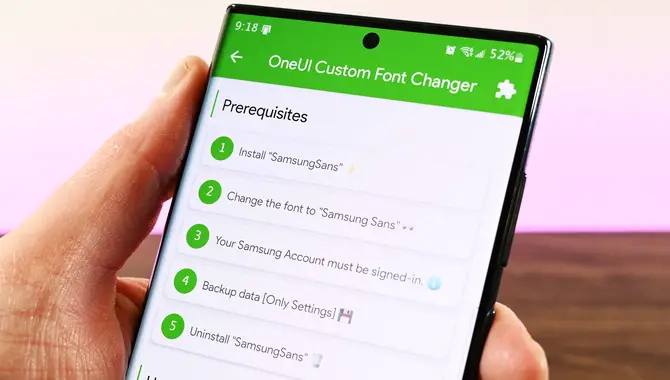
Installing custom fonts on Android is a great way to add a personal touch to your device. The process of installing custom fonts on Android is quite simple and can easily be done by following a few simple steps. You will need to download the font file in the TTF or OTF format. Once downloaded, you can then transfer the file to your phone.
To install the font, you will need to navigate to the Settings menu on your Android device and then select the Display option. From there, you can select the Font option and choose the font you want to install. Simply select the font file you transferred to your phone, and click on the Install button. The installation of your custom font is complete, and it is now ready for use. With this simple process, you can easily customize your Android device to your liking and stand out from the crowd.
Working With Custom Font
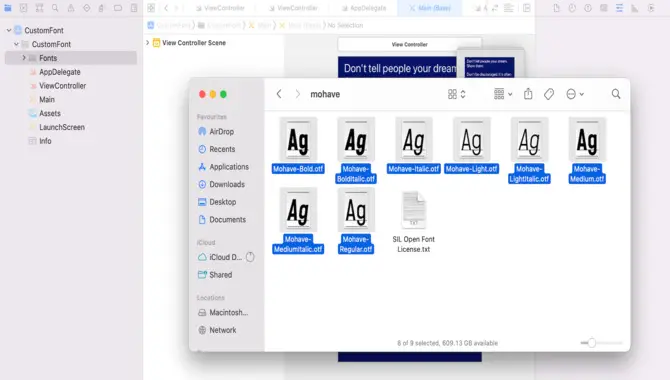
Working with custom fonts can be a fun and creative way to add personality and uniqueness to any project. Whether it’s a website design, a brochure, or a logo, custom fonts can help set the tone and style of your work. It’s important to choose a font that is legible and easy to read.
While you may be drawn to a particular font for its stylistic flair. It’s important to ensure that it doesn’t sacrifice readability in the process. Additionally, it’s important to make sure that the font you choose is appropriate for the context and audience of your project.
Using Custom Font In Layouts Is A Developer’s Perspective
As a developer, using custom fonts in layouts is crucial to creating visually appealing and unique designs. While many pre-installed fonts are available, using a custom font can add a personalized touch to any project. Not only does it enhance the aesthetic appeal.
But it can also help with brand recognition and consistency. Ensuring the font is properly licensed and compatible with all devices and browsers is important. The font’s file size can also impact the website’s loading time. So finding a balance between aesthetics and functionality is key.
There are several ways to use custom fonts in layouts. Including importing the font into the project’s CSS file. Using a third-party font provider or creating a font file and uploading it directly to the server. Each method has its pros and cons but with careful consideration. A developer can choose the best option for their project.
Advantages Of Custom Font In Android
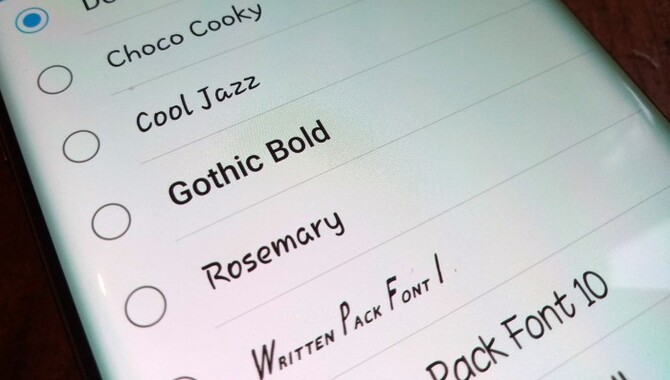
The use of custom fonts in Android applications has become increasingly popular in recent years, and for a good reason. One of the main advantages of using a custom font is the ability to create a unique and memorable brand identity. Selecting a font that reflects your brand’s personality allows you to create a consistent look. And feel across all touchpoints, from your website to your mobile app.
Additionally, a well-designed custom font can enhance the user experience by improving readability and legibility. This is especially important for apps that involve a lot of text, such as e-readers or news apps. Another advantage of custom fonts is the ability to create a more immersive user experience. Selecting a font that complements the overall design of your app. We can create a more cohesive and engaging experience for your users.
Best Practices For Using Fonts On Android
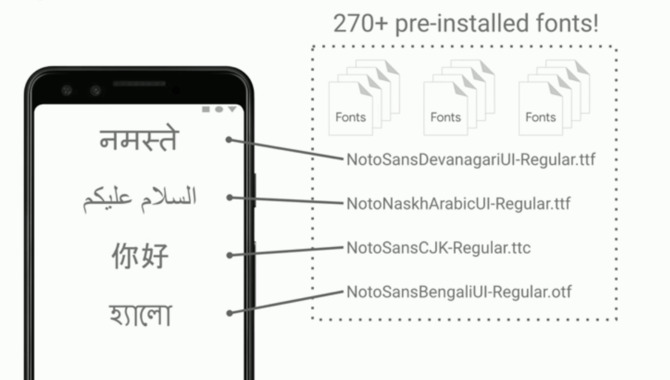
Effective use of fonts is crucial in creating a visually appealing and user-friendly Android app. There are several best practices that developers can follow to ensure that the fonts used in their apps are both readable and aesthetically pleasing. First, it is important to choose fonts that are easily readable on mobile devices. Sans-serif fonts like Roboto and Open Sans are popular choices as they are highly legible on small screens.
Additionally, developers should limit the number of fonts used in their apps to maintain a consistent and cohesive design. Using font weights and styles consistently across the app is also recommended to create a clear visual hierarchy and improve readability. Another best practice for using fonts on Android is optimising their performance by using fonts available in the device’s system.
Troubleshooting Custom Font

When it comes to designing a website, choosing the right font can make all the difference in the impact it has on the user experience. Sometimes, however, using a custom font can present some challenges that require troubleshooting. Custom fonts are often not as widely supported as standard fonts. Which can lead to compatibility issues across different devices and browsers.
One common issue is the font not displaying correctly or not displaying at all. This can happen if the font file is not properly formatted or if the font is not installed on the user’s device. Another problem can arise if the font is not loading fast enough, which can lead to slow website performance. To troubleshoot these issues, it’s important to ensure that the font file is correctly formatted and that the font is installed on the user’s device.
Conclusion
The power of custom fonts in Android has become essential to creating a seamless user experience. From creating a unique brand identity to improving readability, custom fonts are a powerful tool for developers to engage with their users.
By implementing custom fonts, developers can improve brand recognition and enhance readability. And create a unique user interface that stands out from the crowd. With the power of custom font, developers have endless possibilities to enhance their applications’ visual appeal and functionality. It makes an important tool for creating successful and engaging Android applications.
FAQ
How Can Custom Fonts Enhance The User Experience In Android Applications?
Custom fonts can help to establish a brand identity in the app, making it more recognizable and memorable to users.
What Are Some Popular Custom Font Libraries Available For Android Developers?
Some popular custom font libraries available for Android developers include Calligraphy, Typeface, Fontastic, Android-Iconics, and Google Fonts.
What Are The Benefits Of Custom Fonts?
Custom fonts can help a brand stand out and reinforce its visual identity. Custom fonts can be designed to improve legibility and readability, enhancing the user experience.
Can You Use Custom Fonts On Android?
It is possible to use custom fonts on Android by downloading and installing the font file onto the device and then referencing it in the app’s code.
Are There Any Potential Drawbacks Or Limitations To Using Custom Fonts In Android
The method used for custom fonts can vary depending on the platform or technology being used, but some common methods include using @font-face in CSS, embedding fonts in a website or app,

David Egee, the visionary Founder of FontSaga, is renowned for his font expertise and mentorship in online communities. With over 12 years of formal font review experience and study of 400+ fonts, David blends reviews with educational content and scripting skills. Armed with a Bachelor’s Degree in Graphic Design and a Master’s in Typography and Type Design from California State University, David’s journey from freelance lettering artist to font Specialist and then the FontSaga’s inception reflects his commitment to typography excellence.
In the context of font reviews, David specializes in creative typography for logo design and lettering. He aims to provide a diverse range of content and resources to cater to a broad audience. His passion for typography shines through in every aspect of FontSaga, inspiring creativity and fostering a deeper appreciation for the art of lettering and calligraphy.

